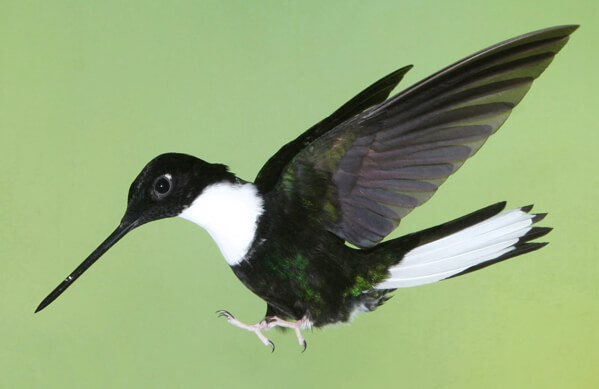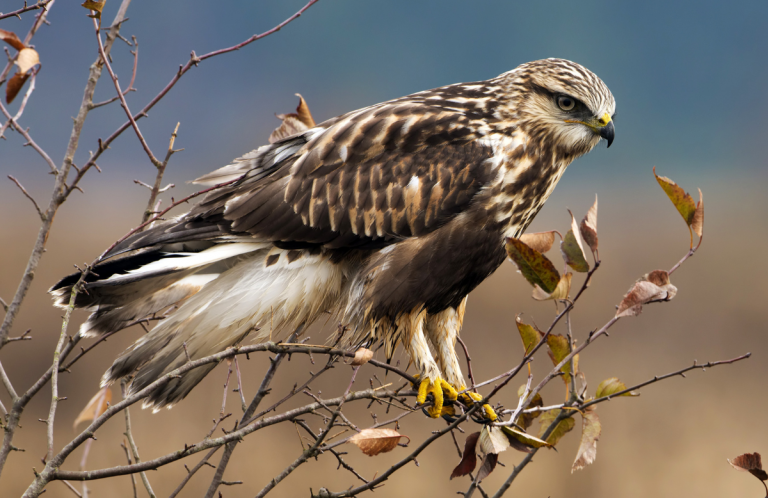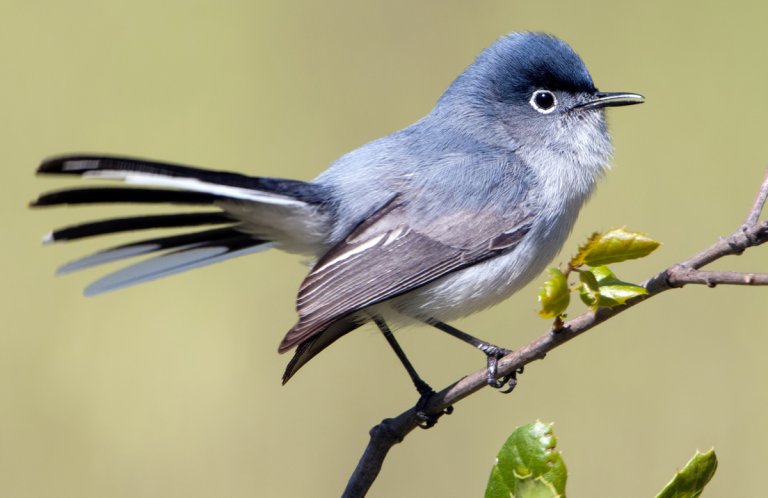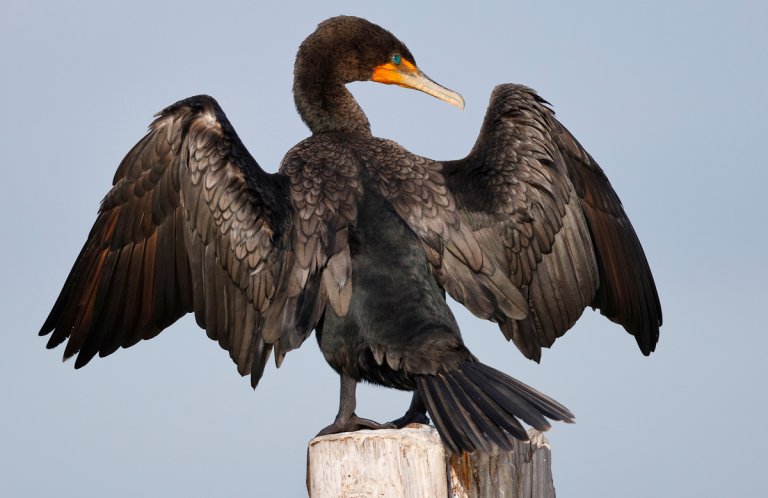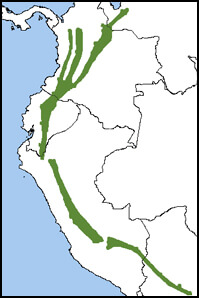 The flashy Collared Inca is unmistakable: both sexes have long, straight bills; eye-catching white chest collars; and mostly white tails. This hummingbird's Latin species name, torquata, means "adorned with a neck chain or collar." Males have black and iridescent green plumage, making their bright white collars especially conspicuous.
The flashy Collared Inca is unmistakable: both sexes have long, straight bills; eye-catching white chest collars; and mostly white tails. This hummingbird's Latin species name, torquata, means "adorned with a neck chain or collar." Males have black and iridescent green plumage, making their bright white collars especially conspicuous.
Although this hummingbird is still common, its population is suspected to be in decline due to habitat loss, a threat that affects other Andean hummingbirds including the Long-tailed Sylph and Glittering Starfrontlet.
The Collared Inca is widespread and is still considered common in and near mountain forests at higher elevations in the Andes. It can be found from Venezuela south through Colombia, Ecuador, and Bolivia. At least six different subspecies are recognized, with varying plumage characteristics. The northern subspecies have white collars; southern subspecies have rufous-colored collars.
Foraging Along Trap-Lines
The Collared Inca is a trap-line feeder, meaning that it forages by flying a routine route between different types of flowers, ranging from the understory to lower canopy forest levels. These hummingbirds tend to hover below dangling flowers with long petals, inserting their bills into them to sip nectar. They also readily visit hummingbird feeders.
Sign up for ABC's eNews to learn how you can help protect birds
Like other hummingbird species such as the Booted Racket-tail and Broad-billed Hummingbird, the Collared Inca aggressively defends its feeding territories with chattering calls and displays. Both sexes utter advertising calls of high-pitched chirps and whistles as they feed at abundant food sources. But unlike most hummingbird species, which are solitary, Collared Incas sometimes associate with mixed flocks of other bird species.
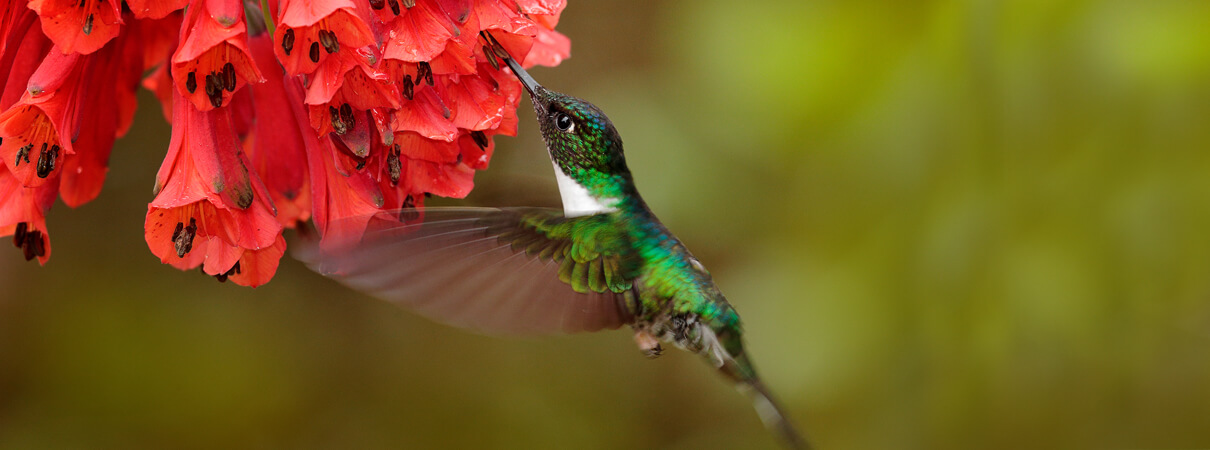
Female Collared Inca by Ondrej Prosicky, Shutterstock
To protect their nests from rainfall in their drizzly cloud forest habitats, Collared Incas often build the nests under the overhangs of embankments and rocks on steep slopes and under overhanging fern fronds. The nests may be constructed of plant materials such as the soft, brown fibers from fern fiddleheads, secured by spider webs, and camouflaged with an outer covering of green mosses.
Protecting Habitat for the Collared Inca
Large areas of the Collared Inca's habitat in Colombia, Ecuador, and Peru are protected by ABC and its in-country partners through land acquisition, habitat restoration, and other methods. Visitors to ABC-supported reserves such as Abra Patricia and the Cerulean Warbler Reserve can easily spot this striking hummingbird. Collared Incas are also reliable visitors to the hummingbird feeders at Ecuador's Tapichalaca Reserve.
Donate to support ABC's conservation mission!





































